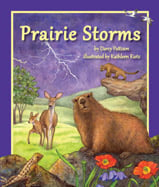Alignment to Standards for VA

| Grade | Number | Standard |
|---|---|---|
| 1 | SC-1.5b | animal characteristics:body coverings, body shape, appendages, and methods of movement) |
| 1 | SC-1.5c | animal characteristics. Key concepts include other characteristics (wild/tame, water homes/land homes). |
| 1 | SC-1.7a | Seasonal changes: Key concepts include how temperature, light, and precipitation bring about changes in plants (growth, budding, falling leaves, and wilting); |
| 1 | SC-1.7b | Seasonal changes: Key concepts include how temperature, light, and precipitation bring about changes in animals (behaviors, hibernation, migration, body covering, and habitat); and |
| 1 | SC-1.7c | Seasonal changes: Key concepts include how temperature, light, and precipitation bring about changes in people (dress, recreation, and work). |
| 2 | GEO-2.4c | comparing the climate, land, and plant life of these regions; |
| 2 | GEO-2.5a | locating the equator, the seven continents, and the four oceans on maps and globes; |
| 2 | MA-2.18a) | use calendar language appropriately (e.g., months, today, yesterday, next week, last week); |
| 2 | SC-2.5a | living things are part of a system. Key concepts include living organisms are interdependent with their living and nonliving surroundings; and |
| 2 | SC-2.5b | living things are part of a system. Key concepts include habitats change over time due to many influences. |
| 2 | SC-2.6a | weather. Key concepts include temperature, wind, precipitation, drought, flood, and storms; and |
| 2 | SC-2.7a | Seasonal changes: Key concepts include effects on growth and behavior of living things (migration, hibernation, camouflage, adaptation, dormancy); and |
| 2 | SC-2.8c | Plants importance Key concepts include plants provide homes and food for many animals and prevent soil from washing away. |
| 3 | GEO-3.6 | The student will interpret geographic information from maps, tables, graphs, and charts. |
| 3 | SC-3.10a | Key concepts include the interdependency of plants and animals; |
| 3 | SC-3.4a | animal adaptations: methods of gathering and storing food, finding shelter, defending themselves, and rearing young; |
| 3 | SC-3.4b | animal adaptations: hibernation, migration, camouflage, mimicry, instinct, and learned behavior. |
| 3 | SC-3.5b | food chains. Key concepts include herbivore, carnivore, omnivore |
| 3 | SC-3.6b | environments Key concepts include dry-land environments (desert, grassland, rain forest, and forest environments) |
| 3 | SC-3.6c | environments Key concepts include population and community. |
| 3 | SC-3.8a | Key concepts include patterns of natural events (day and night, seasonal changes, phases of the moon, and tides); and |
| 4 | SC-4.5b | plants and animals in an ecosystem Key concepts include organization of communities; |
| 4 | SC-4.5d | Key concepts include habitats and niches; |
| 4 | SC-4.6b | Key concepts include weather phenomena (fronts, clouds, and storms). |
| K | GEO-K.4 | simple maps and globes to develop an awareness that a map is a drawing of a place to show where things are located and that a globe is a round model of the Earth; |
| K | GEO-K.4b | locate land and water features. |
| K | SC-K.8a | simple patterns in daily life. Key concepts include weather observations; |
| K | SC-K.8c | simple patterns in daily life. Key concepts include animal and plant growth |
| K | SC-K.9a | change over time Key concepts include natural and human-made things may change over time |
| K | SC-K.9b | change over time Key concepts include changes can be noted and measured. |